they suggested was that I use a stencil to apply my paste more evenly. In other words, they blew off my question.
No, they didn't. They gave you correct advice.
If you have a lot of solder on one pad and little on another, then the surface tension of the large blob can lever up the part. It is very unusual for this to happen with parts as large as 0805. It's a common and well-known problem for 0204. The phenomenon is called tombstoning. Use that as a search term, and you'll find lots of information.
The things you need to do to avoid tombstoning are:
- Use just enough paste to result in a good solder connection, but no more. Larger blobs exert more tombstoning force due to surface tension. A stencil is useful for this.
- Evenly heat the board. If everything melts at the same time, all the forces balance out.
- Design the pads properly. In particular, don't put more copper under the device than required by error tolerance, and don't make the pads wider than necessary.
Since you are seeing this problem on parts as large as 0805, you probably need to fix all the above issues.
Added in response to comments
I don't see how a stencil guarantees I'm not mounding up to[o] much paste.
Then you need to read up on what stencils are and how they work.
The stencil has holes where paste should be applied. The paste is applied over the whole stencil, then excess paste scraped off the top of the stencil. That mean the paste on each pad is limited by the thickness of the stencil. The thickness of the stencil defines the thickness of the paste layer that is left after the stencil is removed.
It doesn't take much paste for a good solder joint. After all, there should only be a thin layer of solder between the pin of a part and the pad that pin sits on. When looking at a good solder joint with a jeweler's loupe or microscope, you should see a small meniscus at the edges of the pins. That is evidence that everything was wetted properly and that the solder flowed properly.
More solder than that does nothing useful. Hand applications of paste tend to result in way more solder than necessary.

